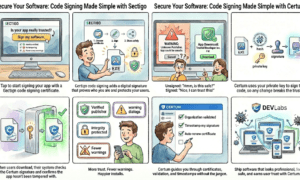Project planning is the cornerstone of successful IT infrastructure initiatives. In today’s rapidly evolving technological landscape, organizations rely heavily on efficient and effective project planning to ensure the smooth execution of their IT endeavors.
From implementing new software solutions to upgrading hardware infrastructure, meticulous planning is essential for minimizing risks, optimizing resources, and achieving desired outcomes.
Understanding the importance of Project planning
Effective project planning lays the foundation for seamless execution and successful project completion. It involves defining project objectives, outlining deliverables, estimating resources, setting timelines, and identifying potential risks. By establishing clear goals and outlining a roadmap for implementation, organizations can align their efforts and resources toward achieving desired outcomes.
Key components of an IT infrastructure project management plan
When developing an IT infrastructure project management plan, there are several key components that organizations should consider. These include:
- Project scope: Clearly define the project scope, including objectives, deliverables, and stakeholders involved. A well-defined scope provides clarity and prevents scope creep during project execution.
- Resource allocation: Identify and allocate the project’s required resources, including human resources, equipment, and budget. Efficient resource allocation ensures the project stays on track and within budget constraints.
- Timeline and milestones: Develop a detailed timeline with key milestones to track progress and ensure timely project completion. Regularly monitoring milestones helps identify potential delays and allows for prompt corrective actions.
- Risk management: Identify potential risks and develop strategies to mitigate them. Effective risk management minimizes disruptions and ensures project success from technical challenges to resource constraints.
- Communication plan: Establish a communication plan to inform stakeholders about project progress, challenges, and decisions. Open and transparent communication fosters collaboration and enhances project visibility.
- Quality assurance: Implement quality assurance processes to ensure deliverables meet predefined standards and requirements. Regular testing and evaluation help identify and address issues early in the project lifecycle.
- Change management: Anticipate and manage changes throughout the project lifecycle. By establishing a formal change management process, organizations can adapt to evolving requirements while minimizing disruptions.
Leveraging managed IT cloud solutions for project success
In today’s digital age, cloud computing has revolutionized how organizations manage their IT infrastructure. Managed IT cloud solutions offer scalability, flexibility, and cost-effectiveness, making them ideal for project planning and execution. By leveraging cloud-based services, organizations can streamline infrastructure management, improve collaboration, and accelerate project delivery.
Final thoughts
Effective project planning is essential for the success of IT infrastructure initiatives. By defining clear objectives, allocating resources efficiently, and mitigating risks proactively, organizations can maximize the chances of project success. Furthermore, leveraging managed IT cloud solutions can enhance agility, scalability, and cost-effectiveness, driving project success in today’s dynamic business environment.
When it comes to reliable IT services and solutions, Roxie I.T. stands out as a provider of IT services in Lexington. With a proven track record of delivering innovative IT solutions and exceptional customer service, Roxie I.T. helps organizations harness the power of technology to achieve their business goals.





























